By H.K. Shivananda, IAS (Retd.)
[Continued from yesterday]
Dasara – 1980
In 1979 with no elected council in Mysore City Municipal Corporation (now MCC), I was posted as the Administrator at MCC with an additional charge of Administrative Training Institute (ATI) as Director. Devaraj Urs lost power within a few months thereafter and in 1980 Gundu Rao became the CM.
His Government appointed a committee under the Chairmanship of Divisional Commissioner, Mysore, in 1980 to plan, execute and revive Dasara as a Nada Habba with full participation and support by all the departments. As an Administrator, I was a member of that committee representing MCC.
Under the chairmanship of B.R. Prabhakara, the then Divisional Commissioner, this committee did an excellent job
to revive Dasara activities followed in earlier years and laid a strong foundation for Dasara as is practised now. Narasimha Rao, son of N. Madhava Rao, Dewan of Mysore State in the forties, was Chief Secretary at that time and had worked earlier as Mysore Deputy Commissioner. With his experience of Dasara activities in earlier years, he gave broad guidance to the committee.
In place of Royal Durbar against the backdrop of illuminated Mysore Palace every evening, a music programme from top-level artistes of the country was held in Durbar Hall for the first 9 days of Dasara and the illuminated Palace became the point of attraction for the public.
In the first two years of Dasara — 1980 and1981 — on the inaugural day of the music programme at the Durbar Hall, Ustad Bismillah Khan’s Shehnai and M.S. Subbalakshmi’s concert had been arranged. The annual Dasara exhibition which had been shifted to Doddakere Maidan in 1977 was continued with enlarged and wider participation.
The mass band programme of Karnataka Police was introduced. All departments in Mysore took Dasara work as a challenge and did their best to bring back the old glory.
In subsequent years bigger committees constituted with wider non-official participation have also done a good job. On the foundation laid in 1980, they added a lot of new events, programmes and competitions to make Dasara more attractive, getting more visitors. Mysore city looked at its best like a decorated new bride during Dasara.
Two small pictures of 1980 Dasara are still green in my memory. One relates to a hoarding put up by Ashvini Ranjan, a textile merchant from Mysore, on the procession route at the beginning of Sayyaji Road near K.R. Circle. It was a big hoarding almost 6 ft X 4 ft fully blank with a picture of a caparisoned elephant in the middle carrying the Golden Howdah with no one sitting inside.
Below the picture, only three bold words were written saying “WE MISS YOU” and nothing else. The big blank hoarding reflected and conveyed effectively the mood and opinion of Mysore citizens on their missing Jayachamaraja Wadiyar on that day.
Another picture of my memory relates to a silly audit objection. After the Dasara, the committee used to meet 2-3 times in the next fortnight to finalise accounts, clear the pending bills and close the file.
At that time, an audit objection for payment of a bill raised both laughter and anger at one go. For the payment of a bill either to Bismillah Khan or M.S. Subbalakshmi — I have forgotten exactly to whom — an auditor objected that there is no comparative quotation and the bill could not be passed.
When we explained to him how silly and foolish his objection was, he said, “I know Sir. I have done my duty. You can overrule me if you want to.” A typical bureaucrat who wants to have his inbuilt defence for a possible future objection! I was reminded of a saying, “Accountant General by the virtue of his office is deprived of exercising common sense.”
Office Building let out to Star of Mysore – 1980
K.B. Ganapathy had started Star of Mysore, the evening English daily in 1978. In 1979, when I came as Administrator of the MCC it was slowly establishing itself, increasing its circulation and meeting the needs of the Engish-educated section of the society.
In 1980, some office space on the second floor of Visvesvaraya Building in K.R. Circle owned by the MCC became vacant and Ganapathy applied for that space on rent for Star of Mysore Office. I allotted it to him, exercising the powers vested with me.
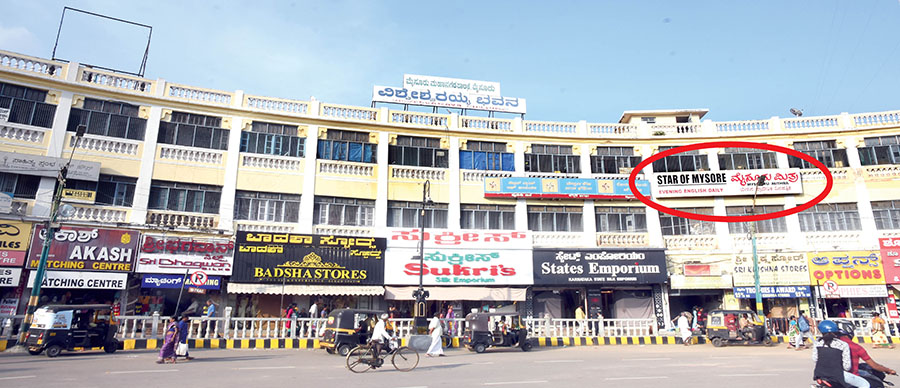
After some days, a Rajya Sabha member from Coorg, who was supposed to be very close to Chief Minister Gundu Rao, spoke to me on phone and asked me why I have allotted that space to a person who is writing against the ruling party in his newspaper always and ideally it should have been given to another applicant belonging to the ruling party.
He was not happy with the answer I gave and threatened that he would raise this as a Rajya Sabha question. I told him he is free to do so if he thinks it is a national issue worth raising in the Rajya Sabha and ended my conversation.
I did not hear from him or anybody else at any time thereafter. However, I now notice Star of Mysore has expanded by leaps and bounds in the last 44 years and it is using this space for its City Office even now.
Devaraja Market fire of 1981 and Farrokh Irani
The Devaraja Market of Mysore is well-planned and the initial construction was done as early as 1886. It has expanded over a period of time and has more than 1,100 shops at present. Unfortunately, one evening in 1981 a fire broke out because of a short circuit and 150 shops were destroyed before the fire could be brought under control by midnight.
The next morning, a meeting was held with all concerned to discuss how to compensate the affected persons and reconstruct the damaged portion immediately.
Farrokh Irani, the owner of Ideal Jawa Company and a well-known citizen of Mysore, also attended the meeting. He had come to Mysore in 1951, established his factory which produced popular Yezdi motorcycles and was the Chairman of that Company from 1961 to 1985 when he passed away. His factory gave jobs to a lot of Mysoreans and he was a well-known philanthropist who helped all worthy causes of the city at that time.
The MCC, as the building owner, had the responsibility to restore the damaged portion of the Market. To avoid bureaucratic delay and put back the affected persons on normalcy early, Irani volunteered to join hands with Corporation and assist in restoration.
True to his words, he put some technical people from his factory the next day itself to assist Corporation engineers on this job. Taking the affected persons also to his confidence, he coordinated and saw the completion of this work early and enabled the shop owners to start the business.
Before I conclude, I want to narrate a small side-effect of this accident. On the evening of this fire mishap, I was to host a long overdue party for a group of my close friends at a place on Sayyaji Rao Road. I was on my way to that party when I got this frantic message on Dhanvanthri Road and I rushed to the fire accident spot and got stuck till midnight.
Naturally, the party was called off. However, my friends had no courage to ask me to host a party at any time thereafter lest I may play some other trick to avoid hosting a party and save money !
[Concluded]
The author is a former Administrator, Mysuru City Corporation (MCC) and former Director, Administrative Training Institute (ATI), Mysuru. Presently, he lives in Bengaluru.



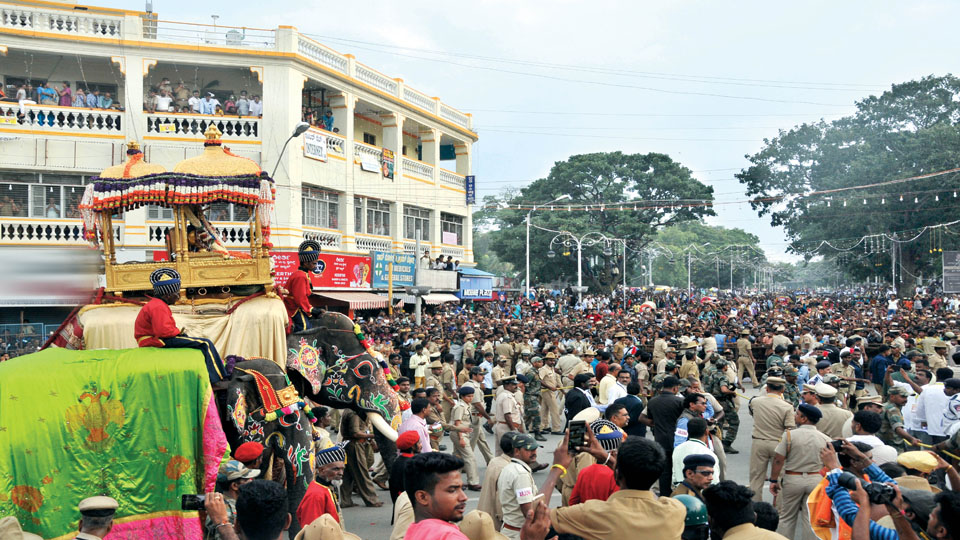
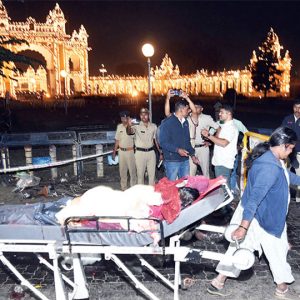
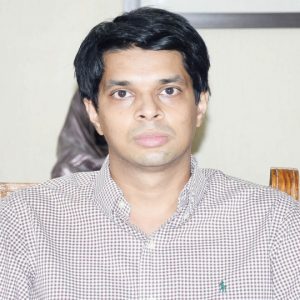
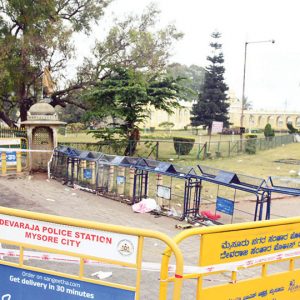
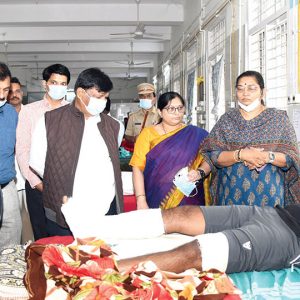
What a wasteful series of narratives, which has not given any insight into what this City was decades ago.
All this author-a bad narrator has been saying in his 3 articles has not been the Mysore of 1950s, which was the last glorious decade of Mysore, but during 1960s and in the following decades, when Mysore was swamped by non-Mysoreans arriving to set up their homes, thus starting the deforestation and the other eco system destruction that followed.
One could imagine, from his poor quality anecdotes, that he was equally poor in his work as an IAS officer-seemed to have been promoted from the MAS cadres, using the state quota-not appearing for the IAS exams at all. His name indicates, he is a Lingayat and was flourishing under the successive Lingayat CMs-Nijalingappa, BD Jatti and Veerendra Patil, when a large number of Lingayat MAS officers were promoted to the IAS cadres. Hence, he does not mention his IAS exams!!
Glad this series concluded, without registering anything new of Mysore city of bygone decades, particularly in 1950s, when it was glorious at its best.
Appreciation to SOM for publishing three articles ” Reminiscences Of Mysore City And Dasara Celebrations – 3″. Having settled down in late 80s, it was interesting to learn about how the dussera was revived. There were several interesting anecdotes. One which has significance is allotting space in MCC building for several reasons. In today’s environment where no government transaction takes place ( even city getting 24X7 water supply or supply of natural gas) it is good to know that SOM could get space without any hassle though ruling party leader did not fail to question for wrong reason.
About Mysore and its cultural heritage.
Mysore was designed to be a Royal city of culture , the best traditions of it, and the institutions like Oriental Research Institute, Maharaja’s Sanskrit College plus the Humanities-course rich Maharaja’s College, reflected this rich tradition. If one includes the study of medicine as old learning, which it is given the rich history of medical treatment developed in ancient India, the Mysore Medical College represented that tradition.
Ever since, Sir K Seshadri Iyer became Dewan, and developed Bangalore as a proper city, Bangalore became the Royal City of administration, as Nalwadi lived in Bangalore Palace most of the year, coming to Mysore for Dasara and Durbar. All Dewans were permanent residents in Bangalore, with bungalows in Mysore for visits only. It was Sir Mirza Ismail, who spent most time as the Dewan in Mysore, although he lived in Bangalore.
Kengal Hanumanthaiah, as the CM simply recognised the above fact and officially shifted the state capital to Bangalore in 1950s.
Interesting that Nalwadi died in a, so were Jc Wadiyar and SD Wadiyar. The Wadiyar’s administrative base was always Bangalore, with the British Resident -the real ruler of the state, the boss of Wadiyars before independence, resided in Bangalore and so were the Dewans as mentioned.
Modern education in sciences and engineering had facilities in Bangalore,;-although there was an engineering college in Mysore from Mid-1940s, it was a private college offering degree courses in civil engineering only.
Interesting the Shivasamudram hydroelectric station commissioned under Sir K Seshadri Iyer, supplied power to electric street lighting in Bangalore and not Mysore, even though this hydroelectric station is nearer to Mysore! Bangalore became the first city in Asia which had electricity powered street lighting. One would argue, it is because of power needed for Kolar Gold fields mining, and the power lines had to go through Bangalore.
The Royal Dasara of 1950s and 1960s , culminating in JC Wadiyar on the golden houdha on the elephant and the procession to Banni Muntap, had had the unique exhibition in the Mysore medical college buildings and plethora of music and other activities around the city at that time.
Mysore’s music and literary culture was more distinct from Bangalore in 1950s, and before. Mysore had Kuvempu, Narasimhaswamy ( Mysuru Mallige fame), Tarasu and Gopalakrishna Adiga, where as Bangalore had DVG, Masti, Anakru, Kailasam etc..
Bangloreans did not know much about Daasar in Mysore, although residing within 100 miles! Many never visited Mysore then, but could only read in papers. This I gathered visiting our family friends there.
The meter gauge rail track from Bangalore to Mysore ( it was not a narrow gauge as Mr Ganapathy says, without checking the fact-as narrow gauge existed only in the Kolar Gold Fields region)
Any reminiscences of Darara should focus more on its celebration in 1950s and in 1960s up until the last Dasara aunder JC Wadiyar. These need mentioning before moving to the 1980s, when Dasara became a mere contrived jamboree for tourism income. Wasting inches of writing material in respect of 1980s, is a fruitless exercise.
@Shneoy
It was the massive influx of non -Mysoreans like Shenoy and Ganapathy, which resulted in the destruction of the forest around the city to create the plots for housing for them,.
Until these non-Mysorenas arrived in large numbers, there was enough space in Mysore for any offices-large or small. If any one wants to blame the state of Mysore in 2022, blame these non-Mysoreans like @Shenoy for triggering the destruction of once beautiful city.
These late comers became the eco warriors , arguing about prevention of the city’s ecosystem destruction, which themselves engineered. The creation of a Grahachara outfit called the MGP- a political pressure force the give prominence to these late comers, mainly politicos, makes mockery of their constant howls about such issues as Chamundi Hill preservation etc.. This MGP consists of retirees, more time in their hands to meddle with issues, to seek attention.
Total hypocrites.
@Shneoy
It was the massive influx of non -Mysoreans like Shenoy and Ganapathy, which resulted in the destruction of the forest around the city to create the plots for housing for them,.
Until these non-Mysorenas arrived in large numbers, there was enough space in Mysore for any offices-large or small. If any one wants to blame the state of Mysore in 2022, blame these non-Mysoreans like @Shenoy for triggering the destruction of once beautiful city.
These late comers became the eco warriors , arguing about prevention of the city’s ecosystem destruction, which themselves engineered. The creation of a Grahachara outfit called the MGP- a political pressure force the give prominence to these late comers, mainly politicos, makes mockery of their constant howls about such issues as Chamundi Hill preservation etc.. This MGP consists of retirees, more time in their hands to meddle with issues, to seek attention.
Total hypocrites.
The author dwells at length about Sowcar Chennaiah, who contributed zilch to Mysore. Indeed, the Congress MLAs or MPs from the city did nothing to the city, the only exception was Aziz Sait, who became a minister. He was approachable, even if one is not in his constituency and considered all of Mysore as his constituency. His son at the oldest engineering college, a nice lad, made him to like this city more. He could only do so much.
Mandya and Mysore were the strong holds of the PSP. SM Krishna the PSP leader then of Mandya and Gurupadaswamy in Mysore were examples. Although SM Krishna did more to Mandya, Gurupadaswamy who was a MP for umpteen years, and a minister at the centre did absolutely nothing for the city.
It is the weakness of these politicians, which ensured that Mysore became the city for the foreigners-non-Mysoreans’ invasion, the the start of the slippery slope of the city’s destruction. @Shnoy is of this category of retirees who arrived in massive numbers to settle in the city. The rest is history.
The revival of 1980s Dasara, a greedy instrument for more tourist influx, more income-generating con game and above all representing the ugliness of doing anything to get income became the norm. Wait until the Mysore airport expands, and direct UAE to Mysore non-stop Emirates Airlines A 320 flights begin , as promised by PM Modi during his recent stop over in the UAE and meeting the Keralite so called businessmen who are in fact smugglers of gold into Kerala and want to expand their business in Mysore!